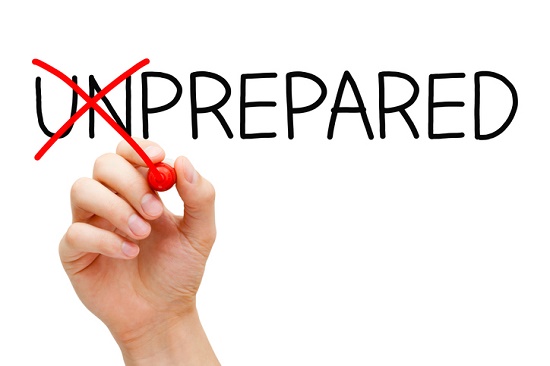
One does not simply walk into a hearing care professional’s office and walk out with the right hearing aids. It’s an intense and individual process that must be customized to your needs. But you can still get the most out of your hearing aids, if you know how to prepare for each step of the process and to work with a qualified hearing care professional.
Follow this plan for a successful hearing aid adjustment process.
Bring a list of questions to your hearing test
At your hearing test appointment, your hearing care professional tests your hearing, scrutinizes the results, and will then help you decide if hearing aids what you need now. The best thing you can do before your appointment is to create a comprehensive list of questions to review at this appointment.
Make sure you include these questions and any others you need to ask:
- What type of hearing loss do I have (mild, moderate, severe or profound)?
- Are hearing aids indicated for my level of hearing loss?
- Do I need hearing aids for both ears, or just one?
- Which hearing aid is best for my needs?
- How can I get the features I need for a price I can afford?
- What are your financing options? (Installments, private insurance, credit, state programs, etc.)
During the hearing test appointment
If the results of your hearing test come back normal, hearing aids may not be required, and you’ll have a baseline test to compare future hearing tests.
If the results indicate hearing loss, and that you can benefit from hearing aids, your hearing care professional will review your options with you.
When you select a hearing aids, remember to ask about and cover all the following options with your hearing care professional:
- Programmability – The vast majority of today’s modern hearing aids are digital and programmable. That means your hearing care professional should be able to program them to match the exact level of your hearing loss. This is so important; out of the box solutions simply won’t work the way you need them to, so if someone tries to sell you hearing aids without this component, be wary.
- Style – These days you can choose from a wide array of hearing aid styles, which is a breath of fresh air from past decades. You can get models that sit behind the ear or models that fit entirely within the ear canal and are hardly visible to anyone else. You’ll want to balance price, ease-of-use, functionality, and aesthetics in making your decision.
- Wireless connectivity – several hearing aid models can hook up wirelessly to compatible smartphones. That way, you can discreetly adjust volume and settings, send phone calls directly to your hearing aids, and even stream music all without any wires or the need for a separate hearing aid remote control.
- Advanced features – Most hearing aid models come with several additional options like background noise reduction, directional microphones for speech enhancement, environmental settings and telecoils for easy-to-understand phone calls. You’ll need to balance your need for any of these options with what you can reasonably afford.
We realize this is a lot to think about and process, but your hearing care professional is trained to help guide you as you make your decisions. Whatever you do, do not let anyone force you towards a decision without considering all of these aspects first, or without answering all of your questions clearly and completely.
At home
Once you’ve selected your hearing aids and had them programmed by your hearing care professional, you’re ready to bring them home. But the process isn’t finished, and you need to keep two things in mind.
First, your hearing aid relationship won’t be “love-at-first-hearing”. You’ll suddenly hear sounds you haven’t heard for ages, and the overall sound might seem strange or “off”. This is perfectly normal and, after a few weeks, will subside.
We recommend starting small at home. Try watching a movie and paying particular attention to the dialogue, engage in one-on-one conversations in a quiet room, and try listening to music and picking out or following certain instruments.
Even though it may be uncomfortable at first, you should try to wear your hearing aids as much of the day as possible, putting them in when you wake up and taking them out before bed. This will speed up the adjustment process, and after a few weeks, you’ll be glad you put in the effort.
And there’s more good news! Your hearing aids can be adjusted again, particularly if you are still struggling to hear and adapt to the new sound environment, you can arrange follow-up visit with your hearing care professional to fine-tune the settings.
Second, to ensure continued performance, you’ll need to properly maintain and care for your new hearing aids. This means daily cleaning, proper storage, and managing your battery supply.
The process of adjusting to your new hearing aids will go much faster and easier if you take this advice and also prepare yourself with the necessary tools: Get storage cases, sanitizers, hearing aid cleaning kits, batteries, tips and instructions from your hearing care professional.
After the requisite adjustment period, you’ll be able to enjoy the all the benefits of better hearing that hearing aids provide. If you have any other questions about hearing aids, or the process of acquiring them, just call us!